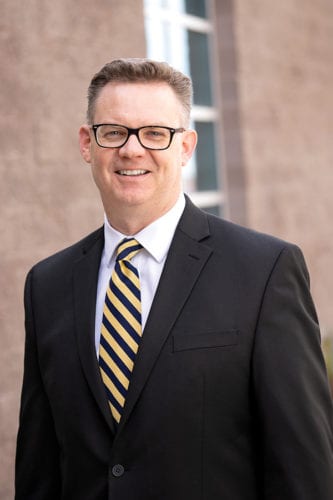
Q1) TRIDEC has been in existence for more than four decades as the lead economic development agency for the metro area. So many readers are familiar with the organization’s general goals. Have those goals shifted since the outbreak of the pandemic?
A1) The three strategic objectives of TRIDEC are Economic Diversification, Federal Advocacy and Creative Leadership. While TRIDEC started our work in 1963 with Federal Advocacy and has always focused on Economic Diversification, since the beginning of March most of our work has fallen into the Creative Leadership category. From joining forces with our community partners to create the Tri Cities Open and Safe Coalition to standing up business grant programs for Washington Department of Commerce and our local jurisdictions, TRIDEC has concentrated our efforts on making sure our economy recovers quickly.
Q2) As an economic development agency, TRIDEC undoubtedly has short list of key performance indicators for its work. Can you share some of these?
A2) From the beginning, TRIDEC has measured the outcome of our work in job growth. We still use this as a key indicator but have evolved to include economic diversity. Since the Manhattan Project and World War II, the federal government has been a major economic driver in the Tri-Cities. Past changes in administrations and policies have had an inordinate impact on our economy because we lacked the diversity and mix of industries that we have today. The other measurement is growth of the tax base, both in real property and sales tax. These are key indicators for our partner cities, counties and ports and allow them to make key infrastructure investments for the next phase of growth.
Q3) Benton Franklin Trends now holds nearly 180 measures of life in the two counties. Which of these are of greatest value to TRIDEC?
A3) While it may seem counter-intuitive for an economic developer to talk about community indicators rather than the traditional jobs and unemployment, measurements such as income distribution, real estate affordability and poverty are more valuable for TRIDEC and the Tri-Cities’ future. Our ability to attract new companies and help local companies grow is related to the quality and diversity of our community. The future of economic development is placemaking and attracting the talent and companies that complement our community.
Q4) You are native to the inland Pacific Northwest but new to the greater Tri Cities. As you look at the non-economic measures of life here captured by the Trends, are they any that jump out at you?
A4) The Poverty category and Real Estate are two that are different from the last two communities our family has lived. Compared to Sandpoint, Idaho and the Lewis-Clark Valley of Washington and Idaho, the share of the population living in poverty is lower. While any poverty is too much, it shows the vitality and strength of the Tri-Cities population. Real Estate is also a dynamic driver of the community in the level of permits for residential construction. While the indicators don’t include affordability, the number of permits per year for the whole community shows that there are great housing choices for our workforce.
Q5) For many years, you’ve been a leader in economic development efforts. Over those years, more data have become available to practitioners. How has the field changed in response to these new sources of information?
A5) My predecessor at TRIDEC, Carl Adrian has been quoted as describing economic development as a process. Consistently using the best practices in our profession will yield good results over time and that has definitely been true here in the Tri-Cities and is the history of TRIDEC. Moving into the future, we are working on incorporating great data sources like Benton Franklin Trends into these same processes to not only provide realistic deliverables for our community and partners but also to shape our strategies and tactics as we recover and rebuild from the impacts of COVID.
